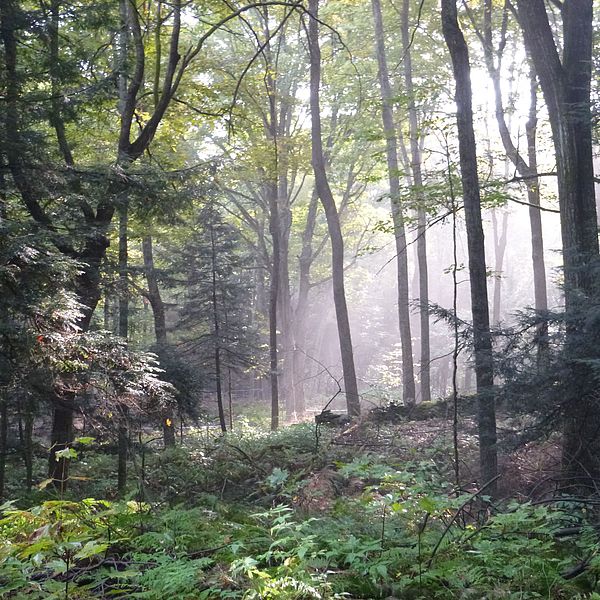Land management staff at BNRC are studying and consulting the latest research to make sure we are making the best possible decisions for the lands BNRC stewards.
Steepletop, BNRC’s second-largest reserve, is pristine forest. Barely touched by invasives, it is a healthy ecosystem, even though the trees are largely the same age, having grown up since the 1850s.
Constitution Hill has some pockets of invasives, but is largely intact. Housatonic Fishing Access, on the other hand, was until recently, overrun by invasives—there was almost nothing native left.
Human activity, plus a changing climate, has affected these lands in different ways.
The Berkshires are probably protected from the worst impacts of climate change—we won’t have coastal flooding, and the highest temperatures will never be as severe here as in the southwest. But we’ll continue to have periods of intense rainfall leading to flooded rivers and streams. And, warmer temperatures allow invasive plants and insects to thrive. There’s a lot we can do now to protect the health of our forests and to ensure the greatest biodiversity into the future. We can’t stop the climate from changing, but we can adapt.
Resistance, Resilience, Transition
The three reserves above are examples of different strategies BNRC is using. At Steepletop, where the forest is healthy, we can focus on resisting the effects of climate change. Here, the best way to promote carbon storage and biodiversity is to replicate oldgrowth conditions. Trees in Massachusetts are all relatively young—much of the land here was farmed until only about 150 years ago, so we don’t have the wide range of age-classes of trees in a true oldgrowth forest.
But with carefully selected cuts, we can create openings in the canopy, allowing light into the understory. The felled trees create a wider variety of habitat, and open area allows for new, fast-growing trees, which sequester carbon quickly. Over time, this creates richer, healthier woodland. Other parts of the forest will be left completely alone— “forever wild.”
Constitution Hill has already been affected by invasives and will require more intervention—a “resilience” approach, to enable it to return to healthy conditions. We recently treated 30 acres of barberry there and will also undertake some forestry work to create early successional habitat.
Some areas cannot be restored to their original conditions and need to be “transitioned” to be more able to withstand future conditions. That could be tree species better adapted to warmer temperatures.
“On some properties we see hemlocks dying back from hemlock woolly adelgid; on others we see beech trees that were living with beech bark disease now dying back as beech leaf disease moves through,” says Jenifer Dickinson. In her role as Stewardship Coordinator, she visits and monitors BNRC’s 50+ reserves and 110 conservation restrictions, so she sees the wide range of conditions across the county. “You can’t always just let nature take its course,” Jenifer adds, “especially when it comes to areas already impacted by climate change—if you do, invasive species have the potential to take over and crowd out the species that provide habitat for native insects, birds and animals.”
“All of us have a responsibility to make wise management decisions on our land—even a 10-acre parcel is part of the larger ecosystem and the choices made there affect our overall resilience,” Jenifer says. To learn more about how to care for your woodlands for maximum sustainability, contact BNRC or MassWoods.org.

